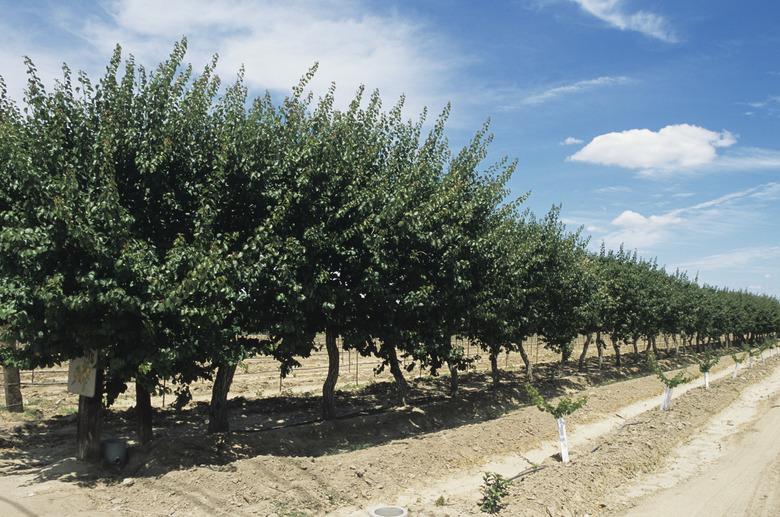How To Grow Apricot Trees From Pits
Growing an apricot tree (Prunus armeniaca) from a seed is a fun and easy family project. Save the seed from any apricot, but consider starting seeds from a few varieties for some diversity. It's important to know that commercial apricot trees typically are hybrids, which means that the seeds from fruit you buy at the market won't likely produce fruits as flavorful as the ones you enjoyed eating. Another consideration is hardiness range. These trees are hardy only in USDA zones 6 through 9, so you won't be able to grow them if you live outside this hardiness range.
Cracking the Apricot Pit
Clean off the apricot pits and leave them on a flat surface for a few days to dry in order for the inside shell to shrink. The drying process will make it easier to get the inside seed out and cause the shell to become more brittle so it cracks.
To harvest the apricot seed, crack the dried apricot pit with a nutcracker or a pair of pliers. As the seeds are delicate, this is a gentle process. If the tools don't penetrate the shell, use a hammer and gently tap on the shell until it cracks. As the shell fragments might break off, it's best to take precautions and wear eye protection. If using a hammer, take the pit outside before cracking on a sidewalk or wooden block so as not to damage inside surfaces. Once open remove the seed. It resembles an almond.
Preparing the Apricot Seed
After harvesting seeds, clean off any dirt or debris and place them on a paper towel to dry for 24 hours. The next day, wrap the seeds in a slightly damp paper towel and place them in a jar, container or zip top bag. Check the container periodically and change the paper towels if mildew is present.
Put the jar or container in the refrigerator to mimic the effects of a cold winter. Seeds need to stay in this cold environment for 60 days, during which (or shortly after) the seeds should sprout. Apricots seeds are poisonous so keep them out of the reach of children and warn family members not to handle them.
Planting Apricot Sprouts and Seedlings
Plant each sprouted seed in a potting container with drainage holes and cover with a high-quality potting soil. Place in a sunny area of the home and keep the soil damp but don't overwater. Plant each seedling in a one-gallon container until leaves are established until they're ready to plant outside.
Plant your apricot seedlings in the garden when the danger of frost is past. Choose a sunny site with well-drained soil that has a neutral pH and add lime if a soil test indicates a low pH. Making sure roots and are completely covered, plant each seedling 10 to 20 feet apart to accommodate growth. If the area isn't known for good drainage, plant each seedling in a 3-foot-tall mound to avoid root rot. For best pollination, plant your apricot seedlings near other varieties of apricots.
Maintaining Apricot Seedlings
Avoid pruning the seedling's leaves and branches at first, because they will affect the tree's ability to eventually bear fruit. Only trim to removed damaged or diseased stems. Cover seedlings with two to three inches of mulch so they stay warm as the weather turns cool. Keep weeds at bay and water plants enough to feed the roots but avoid overwatering. With proper care, your tree will thrive and in a few years may bear delicious fruit.
